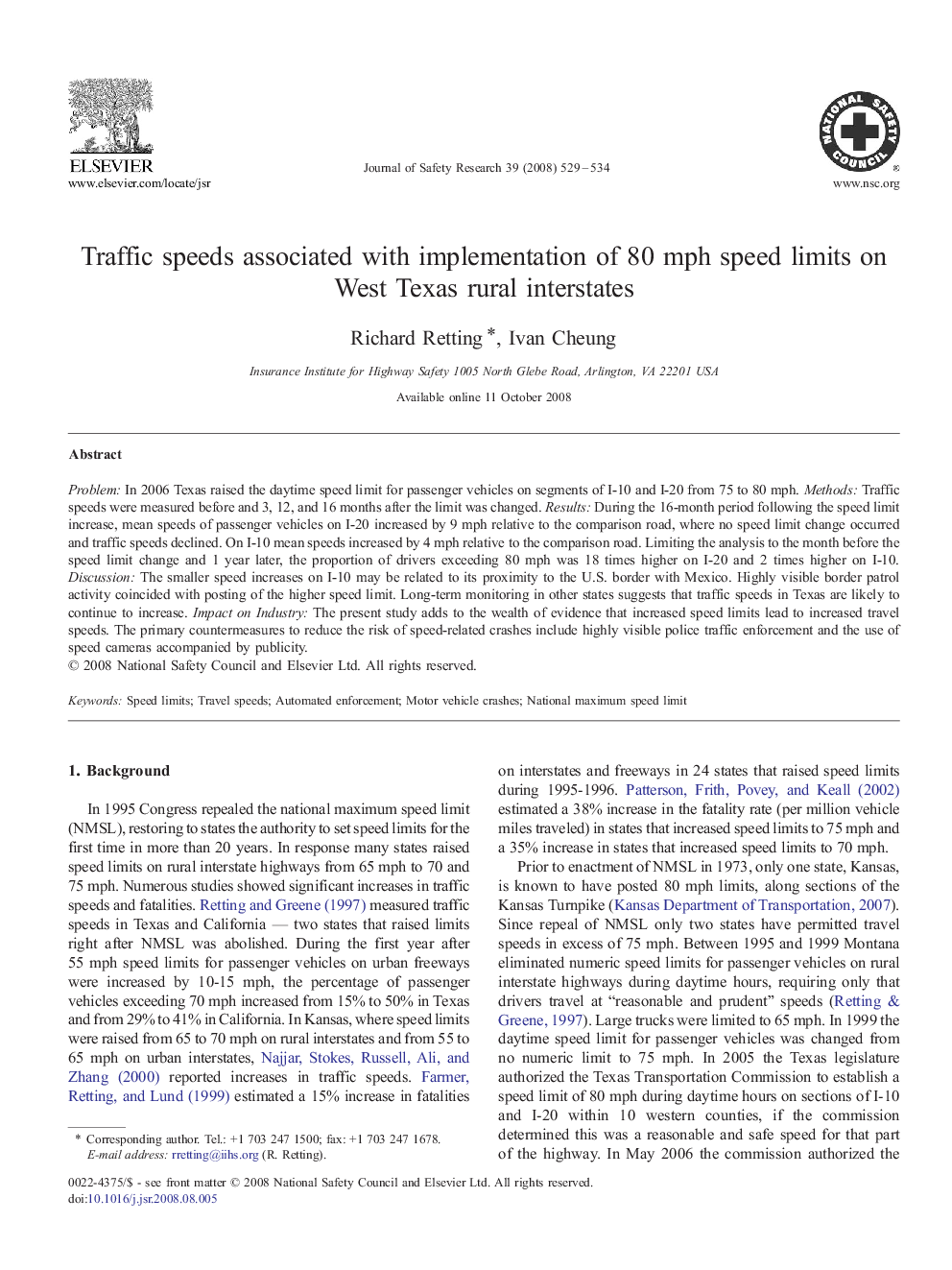| Article ID | Journal | Published Year | Pages | File Type |
|---|---|---|---|---|
| 587951 | Journal of Safety Research | 2008 | 6 Pages |
ProblemIn 2006 Texas raised the daytime speed limit for passenger vehicles on segments of I-10 and I-20 from 75 to 80 mph. Methods: Traffic speeds were measured before and 3, 12, and 16 months after the limit was changed. Results: During the 16-month period following the speed limit increase, mean speeds of passenger vehicles on I-20 increased by 9 mph relative to the comparison road, where no speed limit change occurred and traffic speeds declined. On I-10 mean speeds increased by 4 mph relative to the comparison road. Limiting the analysis to the month before the speed limit change and 1 year later, the proportion of drivers exceeding 80 mph was 18 times higher on I-20 and 2 times higher on I-10. Discussion: The smaller speed increases on I-10 may be related to its proximity to the U.S. border with Mexico. Highly visible border patrol activity coincided with posting of the higher speed limit. Long-term monitoring in other states suggests that traffic speeds in Texas are likely to continue to increase. Impact on Industry: The present study adds to the wealth of evidence that increased speed limits lead to increased travel speeds. The primary countermeasures to reduce the risk of speed-related crashes include highly visible police traffic enforcement and the use of speed cameras accompanied by publicity.
